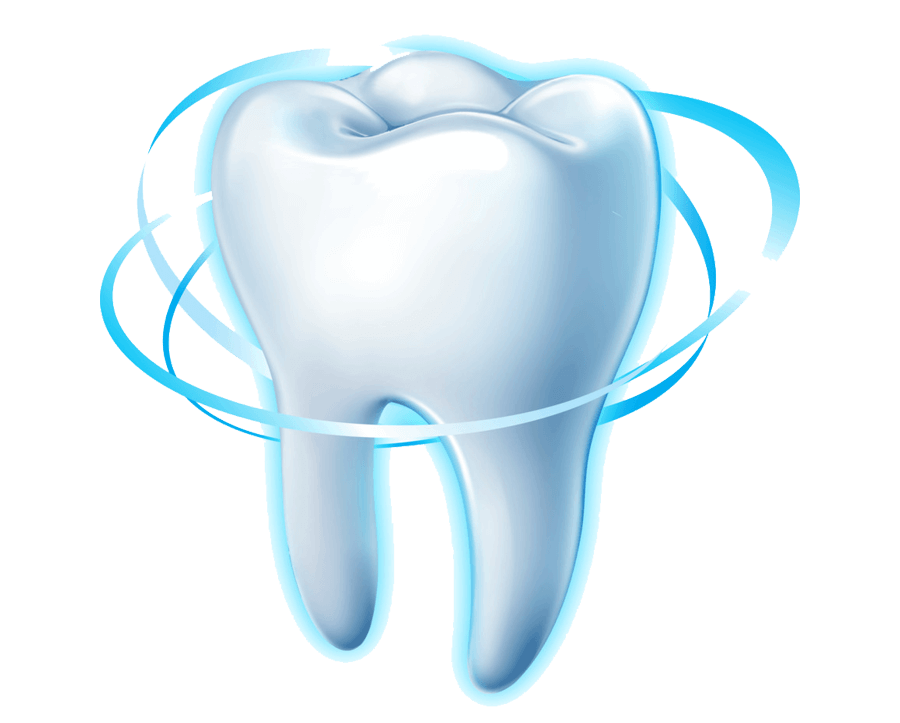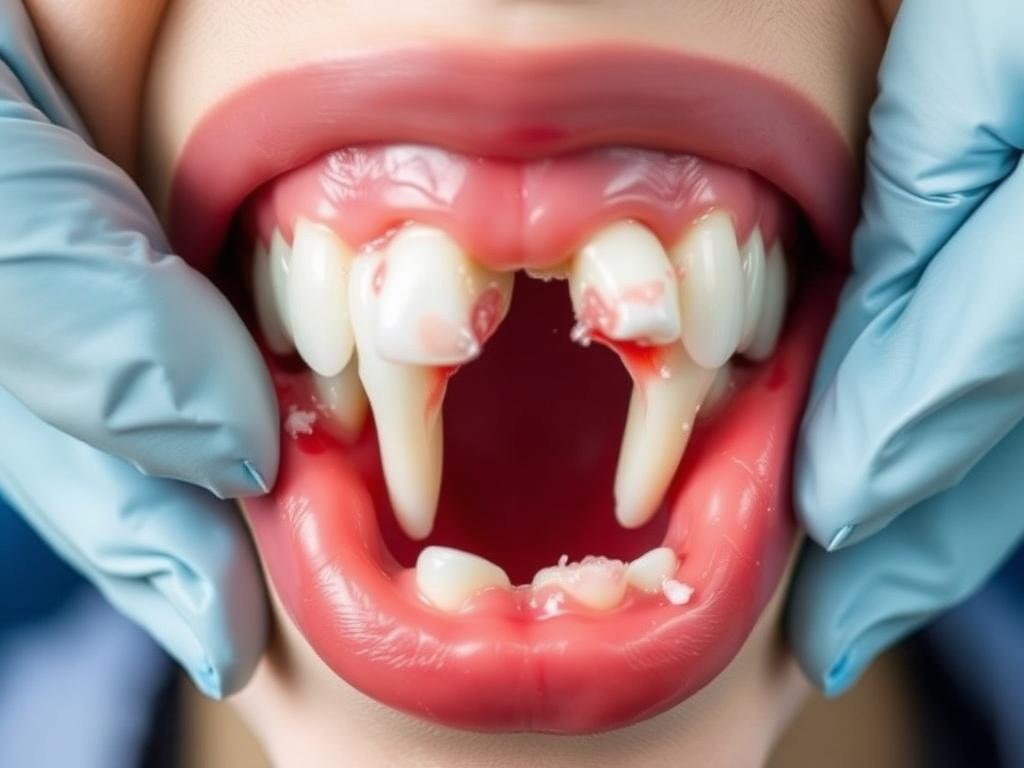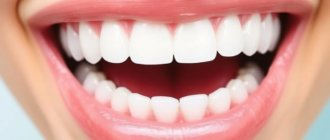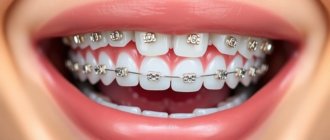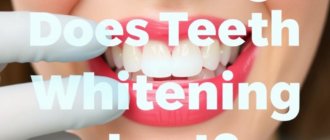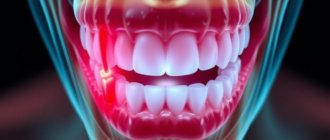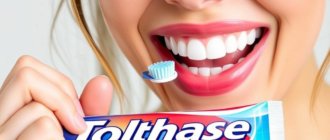Losing a tooth in an accident is one of those moments that freezes you: time seems to slow down, the mouth fills with blood, and a round, white object lies on the ground. Whether the accident happens to a child on the playground, an adult in a fall, or during a contact sport, those first few minutes determine whether a tooth can be saved. The German phrase Zahnunfall: Erste-Hilfe-Maßnahmen für ausgeschlagene Zähne neatly captures the urgency and the practical reality. In plain English: dental trauma — first-aid measures for knocked-out teeth. This article will walk you through what to do, what not to do, the best storage media for an avulsed tooth, when to attempt reimplantation, and the follow-up steps to maximize the chance the tooth can be reinserted and preserved.
You don’t need to be a dentist to act effectively. Calm, quick, and correct basics can make the difference between saving a tooth and losing it. I’ll explain the physiology behind what makes a tooth salvageable, the timeline that matters, practical step-by-step actions for adults and children, and how to communicate with emergency services or your dentist. I’ll also include handy tables and checklists you can memorize or print and keep in a first-aid kit. Read on — and keep calm. The best thing you can do after a Zahnunfall is be prepared.
Содержание
- 1 Why the First Minutes Matter
- 2 Step-by-Step First Aid for a Knocked-Out Tooth
- 3 Storage Media: What to Use and What to Avoid
- 4 Reimplantation: Should You Try to Put the Tooth Back Yourself?
- 5 Primary (Baby) Teeth vs. Permanent Teeth — Different Rules
- 6 Emergency Care and Follow-Up
- 7 Medications and Additional Medical Considerations
- 8 Prognosis: What to Expect After Reimplantation
- 9 Prevention: Reducing the Risk of a Zahnunfall
- 10 Special Considerations: Children, the Elderly, and Complex Trauma
- 11 Common Questions and Myths
- 12 Quick Reference Checklists
- 13 Practical Items for a First-Aid Kit
- 14 Real-life Scenarios: What You Might Face
- 15 When the Tooth Can’t Be Saved
- 16 Final practical tips to remember
- 17 Resources and where to learn more
Why the First Minutes Matter
When a tooth is completely knocked out — medically called an avulsed tooth — the cells of the periodontal ligament (the soft tissue that attaches the root to the bone) are exposed and start to die outside the body. Those cells are crucial for reattaching the tooth successfully into its socket. The faster you act, the more viable those tissues remain. That’s why clinicians say the “golden hour” is real: reimplantation within 30 minutes to an hour gives the best prognosis. That being said, rescue is sometimes possible even after longer times if the tooth was stored properly. Understanding this biological reality turns panic into purposeful action.
Beyond biology, there’s also bleeding, pain, and shock to consider. Controlling bleeding and comforting the injured person (especially children) are essential parts of first aid. And there’s a legal and medical aspect: knowing whether the knocked-out tooth is a milk (primary) tooth or a permanent tooth will change your actions — especially regarding reimplantation.
Immediate mindset: stay calm and prioritize
When you encounter a dental emergency, take a breath. Your next steps:
- Make sure the scene is safe and the injured person is conscious and breathing.
- Keep the person calm and seated or lying down, depending on their condition.
- Stop the bleeding and assess other injuries — a knocked-out tooth often accompanies facial trauma that may require emergency care.
- Find and preserve the tooth, if possible; keep it moist and get to a dentist immediately.
Step-by-Step First Aid for a Knocked-Out Tooth
Below is a practical, numbered sequence you can follow. These steps are suitable for a permanent tooth in a child or adult. Adjust slightly for very young children; see the section about primary teeth later.
- Locate the tooth. Time is critical, so find it quickly but gently. Try to identify if it’s a whole tooth or just a fragment.
- Pick up the tooth by the crown only. Avoid touching the root — the dull, tapered part that was embedded in the gum. Do not scrub the root.
- If the tooth is dirty, rinse it gently under cool running tap water for no more than 10 seconds. Do not use soap, alcohol, or disinfectants. Do not scrub or scrape the root.
- Try to reinsert the tooth immediately if the injured person is alert and cooperative. Gently push the tooth back into the socket with your fingers, making sure it is facing the right way. Bite gently on a clean cloth or gauze to hold it in place. If you can’t reinsert it, keep the tooth moist in an appropriate storage solution (see table below) and go to a dentist.
- Control bleeding by applying light pressure with sterile gauze or a clean cloth. If bleeding doesn’t stop after 10–15 minutes of pressure, seek emergency care.
- Seek emergency dental care immediately. Time to professional treatment is the most important factor for success.
What if you can’t reinsert the tooth?
If reimplantation isn’t possible — because the injured person is unconscious, a very young child, or the tooth cannot be repositioned — keep the tooth moist in an appropriate medium (milk, saline, or a specialized storage solution). Do not wrap the tooth in dry tissue, because drying kills the periodontal ligament cells.
Storage Media: What to Use and What to Avoid
If immediate reinsertion is not possible, placing the tooth in the right storage medium preserves cells for later reimplantation. Here is a clear comparison.
| Storage Medium | How to Use | Pros | Cons |
|---|---|---|---|
| Hank’s Balanced Salt Solution (HBSS e.g., Save-A-Tooth) | Place tooth directly in the solution and seal container. | Best proven medium; preserves cells well for hours. | Not commonly available outside sports/medical kits. |
| Cold milk | Put the tooth in a closed container with milk; keep refrigerated if possible. | Readily available; maintains cell viability fairly well. | Less ideal than HBSS but excellent practical choice. |
| Saline solution (sterile) | Place tooth in a container with saline. | Good if available (e.g., in medical settings). | May not be available in non-medical environments. |
| Person’s saliva (buccal pouch) | Place tooth between cheek and gum — but only if the person is conscious and old enough not to swallow it. | Accessible immediately; maintains moisture. | Not recommended for very young children; risk of contamination/swallowing. |
| Tap water | Short rinse is acceptable; do not store tooth in water for long. | Common and immediate solution to rinse off debris. | Too hypotonic — prolonged exposure damages cells. |
| Dry storage (wrapped in tissue) | Often the default, but not recommended. | None. | Highly damaging to ligament cells; drastically reduces success. |
If you have no milk, saliva can be used as an emergency measure, but milk or HBSS are preferable. The key is to keep the tooth moist and to minimize contact with the root.
Reimplantation: Should You Try to Put the Tooth Back Yourself?
Many first-aid guides recommend immediate reimplantation of a permanent tooth, if the person is cooperative and you feel confident. This is because reimplantation within minutes offers the best chance of success. Here are practical considerations:
- If the person is conscious, calm, and willing, try to place the tooth back into the socket immediately. Align it correctly and push gently until it fits. Hold it in place by having the person bite on gauze or a soft cloth.
- If you are unsure of the tooth orientation, compare it to the other side or a mirror. The crown is the visible white part; the root is inside the socket. For front teeth, orientation is usually obvious.
- If inserting hurts, or if there is significant jaw or facial fracture suspected, do not force the tooth; stabilize and transport the person to emergency care.
- After reimplantation, a dentist will usually splint the tooth to the neighboring teeth for several days to weeks and may prescribe antibiotics or a tetanus booster if indicated.
Caution: Don’t attempt to reimplant a primary (baby) tooth. Reimplanting a primary tooth can damage the developing permanent tooth underneath.
When not to reimplant
There are times you should not try to reinsert the tooth yourself:
- If it’s a baby tooth.
- If the person is unconscious or cannot cooperate.
- If severe head, neck, or facial injuries are present — stabilize the person and seek emergency care for trauma management first.
- If the tooth is dirty and you have no way to rinse it safely, or if you suspect the root is fractured severely.
Primary (Baby) Teeth vs. Permanent Teeth — Different Rules
A crucial distinction in Zahnunfall response is between primary and permanent teeth. Mistaking one for the other can lead to inappropriate action.
Primary teeth (milk teeth)
If a baby tooth is knocked out:
- Do not attempt to reimplant it. Reimplantation of a primary tooth can interfere with the growth and positioning of the underlying permanent tooth and can increase the risk of infection.
- Control bleeding and comfort the child.
- Collect the tooth if you like, but do not store it with the intent to reimplant.
- Take the child to a dentist for assessment — sometimes space maintenance or simple cleaning is necessary, and pain control or antibiotics may be considered.
Permanent teeth
Permanent teeth are candidates for reimplantation. They require immediate attention to maximize the chance the ligament and root remain viable. Reimplantation, splinting, antibiotic therapy and follow-up root canal treatment are common steps a dentist may use. Time matters: ideally, reimplant within 30 minutes, although good outcomes have been reported with proper storage up to several hours.
Emergency Care and Follow-Up
0
After taking initial first-aid steps, the injured person needs professional dental care as soon as possible. Ideally, reach a dentist within 30–60 minutes. If that is not possible, go to the nearest hospital emergency department.
What the dentist will likely do
The dentist or emergency clinician will:
- Assess the injury, take dental X-rays, and examine for additional facial trauma.
- Reinsert and reposition the tooth if not already done.
- Stabilize the tooth using a flexible splint attached to neighboring teeth for a period (often 1–2 weeks for an avulsed tooth; longer if other injuries are present).
- Prescribe antibiotics to reduce infection risk, especially if the tooth was contaminated or the socket damaged.
- Administer tetanus prophylaxis if the wound is dirty and the person’s vaccination is not up to date.
- If the tooth’s root is mature (closed apex), the dentist may recommend or perform root canal treatment either immediately or within a couple of weeks to prevent infection and root resorption.
- Arrange follow-up appointments to monitor healing — success is judged over months to years because root resorption can develop later.
Medications and Additional Medical Considerations
Antibiotics and tetanus boosters are frequently part of the follow-up care after tooth avulsion, but they are prescribed and administered by clinicians — don’t self-prescribe. Common considerations:
- Antibiotics: Often prescribed to reduce infection risk after reimplantation, especially if the tooth was contaminated.
- Tetanus: Considered if the wound is contaminated and the patient’s tetanus immunization is not current.
- Pain management: Over-the-counter pain relievers (e.g., acetaminophen or ibuprofen) help for local pain, taking into account contraindications and child dosing. Avoid aspirin in children due to Reye syndrome risk.
Prognosis: What to Expect After Reimplantation
Even with perfect first aid, the outcome can vary. Some teeth reattach and function normally for years; others may undergo root resorption or ankylosis (fusion to bone) and eventually be lost. Factors that influence prognosis include:
- Time outside the mouth before reimplantation.
- Storage medium and whether the tooth was kept moist.
- Patient’s age and general health.
- How clean the tooth and socket were and whether there was additional periodontal or bone damage.
- Whether the tooth was replanted and stabilized promptly and professionally.
Long-term follow-up typically includes regular dental exams and X-rays to check for signs of resorption. If a replanted tooth fails long term, options include dental implants, bridges, or orthodontic solutions — but these decisions are made after growth finishes in children and with careful planning.
Prevention: Reducing the Risk of a Zahnunfall
Preventing dental trauma is better than treating it. Practical steps can significantly reduce the risk:
- Wear a well-fitted mouthguard for contact sports; custom-made guards from a dentist are best.
- Use helmets for biking, skateboarding, and sports with head injury risk.
- Childproof homes to limit falls for toddlers: gates on stairs, secure rugs, and close supervision.
- Avoid chewing hard objects (ice, hard candy, pens) and opening packages with your teeth.
- Teach children safe play and the proper use of sports equipment.
Choosing and caring for a mouthguard
A mouthguard should be comfortable, properly fitted, and replaced if worn. Store-bought boil-and-bite guards are better than nothing, but a dentist-fitted guard offers the best protection and fit. Clean and dry the guard after each use and store in a ventilated case.
Special Considerations: Children, the Elderly, and Complex Trauma

Children
- May be frightened and uncooperative; calm reassurance helps. If too young to allow reimplantation, preserve the tooth in milk or HBSS and bring it to the dentist.
- Primary teeth should not be replanted.
- Consider growth and future orthodontic needs when planning long-term solutions.
Elderly patients
- May have more fragile bone or other health conditions that complicate reimplantation.
- Medications like blood thinners change bleeding management; communicate all medications to the treating clinician.
Complex facial trauma
- When other injuries are possible (e.g., head trauma, jaw fractures), prioritize life-saving measures and transport to emergency care. Stabilize the head and neck as needed and avoid moving the person if spinal injury is suspected.
- Dental treatment may be delayed until other injuries are managed, but preserve the tooth appropriately for later reimplantation if possible.
Common Questions and Myths
Myth: If a tooth is dirty, discard it
Reality: A dirty tooth can often be rinsed gently and replanted. Discarding it removes any chance of saving the tooth. Rinse briefly and preserve the tooth in a suitable medium.
Myth: Reimplantation always works
Reality: Success depends on time, storage, and the extent of damage. Quick and proper action increases the odds but doesn’t guarantee long-term survival.
Question: Can I store the tooth in ice or in a freezer?
Do not store the tooth on ice or in a freezer. Extreme cold will damage the periodontal ligament cells. Keep the tooth moist at room temperature or cool, but not frozen.
Question: Is there any home remedy that helps?
Home remedies like egg white or coconut water have been suggested, but milk or HBSS is the standard recommendation. Avoid home remedies that dry the tooth out or expose it to chemicals.
Quick Reference Checklists
Immediate action (within the first 5 minutes)
- Make sure the person is safe and conscious.
- Locate the tooth and pick it up by the crown.
- Rinse gently with water if dirty; do not scrub.
- Attempt reimplantation if it’s a permanent tooth and the person is cooperative.
- If reimplantation is not possible, store in milk, HBSS, or saliva (if appropriate).
- Get to a dentist or emergency department immediately.
What to tell the dentist or ER staff
- Time of the accident and time the tooth was avulsed.
- What you did with the tooth (rinse, reinserted, stored in milk, etc.).
- Any other injuries and whether the patient has medical conditions or is on medications (e.g., blood thinners).
- Vaccination status for tetanus, if known.
Practical Items for a First-Aid Kit
Keep a small dental-first-aid kit at home, in sports bags, or in schools:
- Save-A-Tooth kit or similar HBSS solution if available.
- Small sealed container for tooth transportation.
- Sterile gauze and clean cloths for bleeding control.
- Disposable gloves and mask for safe handling.
- Cold pack for swelling control.
- List of local emergency dentists and emergency room phone numbers.
Real-life Scenarios: What You Might Face
Scenario 1: Child falls off a bike and a front tooth is knocked out. The parent finds the tooth, rinses it quickly, and cannot reinsert because the child is crying and uncooperative. The parent stores the tooth in milk and drives to an emergency dentist. The dentist reimplants the tooth, splints it, and prescribes antibiotics. This is a common scenario and has a good chance of success if handled quickly.
Scenario 2: Adult in a sports game has a tooth avulsed but is conscious. The teammate immediately rinses the tooth briefly, reinserts it correctly, and holds it with gauze until emergency dental treatment. Because reimplantation was immediate, the prognosis is favorable.
Scenario 3: Primary tooth in a toddler is knocked out at the playground. The caregiver notices it’s a baby tooth and does not attempt reimplantation, controls bleeding, comforts the child, and seeks dental advice. This avoids damaging the permanent tooth developing below.
These examples emphasize the same themes: quick action, correct handling, and timely professional care.
When the Tooth Can’t Be Saved
Sometimes, despite best efforts, the tooth cannot be saved. If reimplanted teeth develop infection or resorption and must be removed, consider replacement options:
- Dental implants (usually for adults once jaw growth is complete).
- Fixed bridges (depend on adjacent healthy teeth).
- Removable partial dentures for temporary or financial reasons.
- Orthodontic space closure for children or adolescents as a growth-friendly option.
Loss of a tooth can be distressing, especially for young people, but modern dentistry provides many excellent and long-lasting solutions. Psychological support and good communication with the dental team help patients and families through the process.
Final practical tips to remember
- Always pick up the tooth by the crown — never by the root.
- Rinse briefly if dirty; don’t scrub or use disinfectants on the root.
- Try to reinsert a permanent tooth immediately if possible.
- Store an unreimplanted tooth in milk, HBSS, or saline — not dry.
- Bring the tooth with you to the dentist in a sealed container.
- Do not try to reimplant a baby tooth.
- Seek professional dental care promptly; follow the dentist’s instructions for splinting, antibiotics, and follow-up visits.
Resources and where to learn more
If you’re involved in youth sports, school nursing, or child care, consider training or printed quick-reference guides. Many dental associations provide first-aid leaflets for dental trauma, and sports-grade mouthguard suppliers can suggest appropriate protective gear. Local dentists often provide community talks — asking your dentist for a short demonstration on tooth handling can be invaluable.
Conclusion
A Zahnunfall — a dental accident with a knocked-out tooth — is frightening, but timely and correct first aid truly matters. Keep calm, retrieve the tooth carefully by the crown, rinse briefly if necessary, attempt reimplantation when appropriate, or preserve the tooth in milk or a specialized solution, then get to a dentist immediately. Knowing what to do beforehand increases the odds of saving a tooth and reduces the trauma for everyone involved. Keep a small dental emergency kit handy, learn the basics, and encourage protective measures like mouthguards — because prevention and preparation are your best allies when seconds count.
